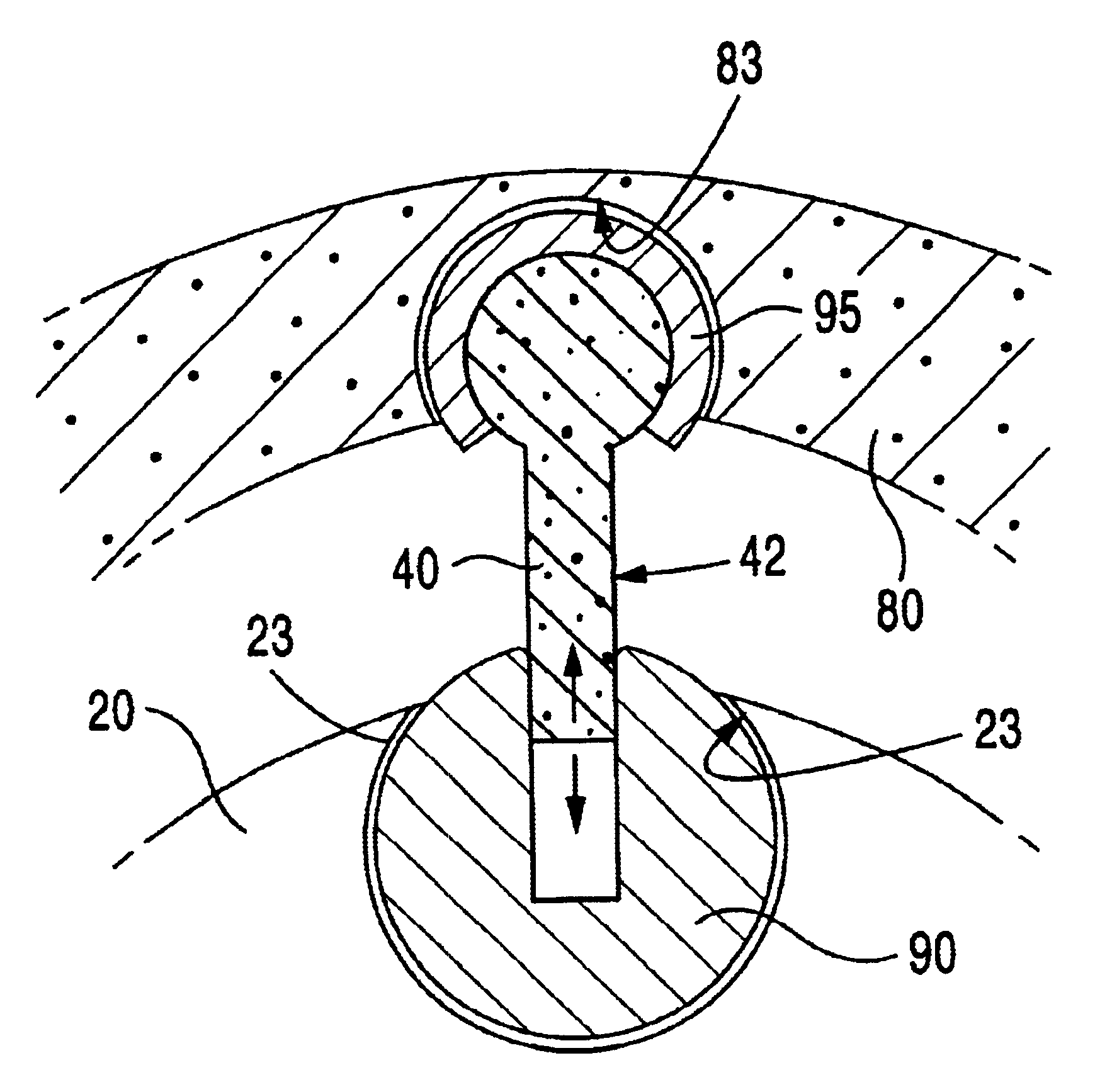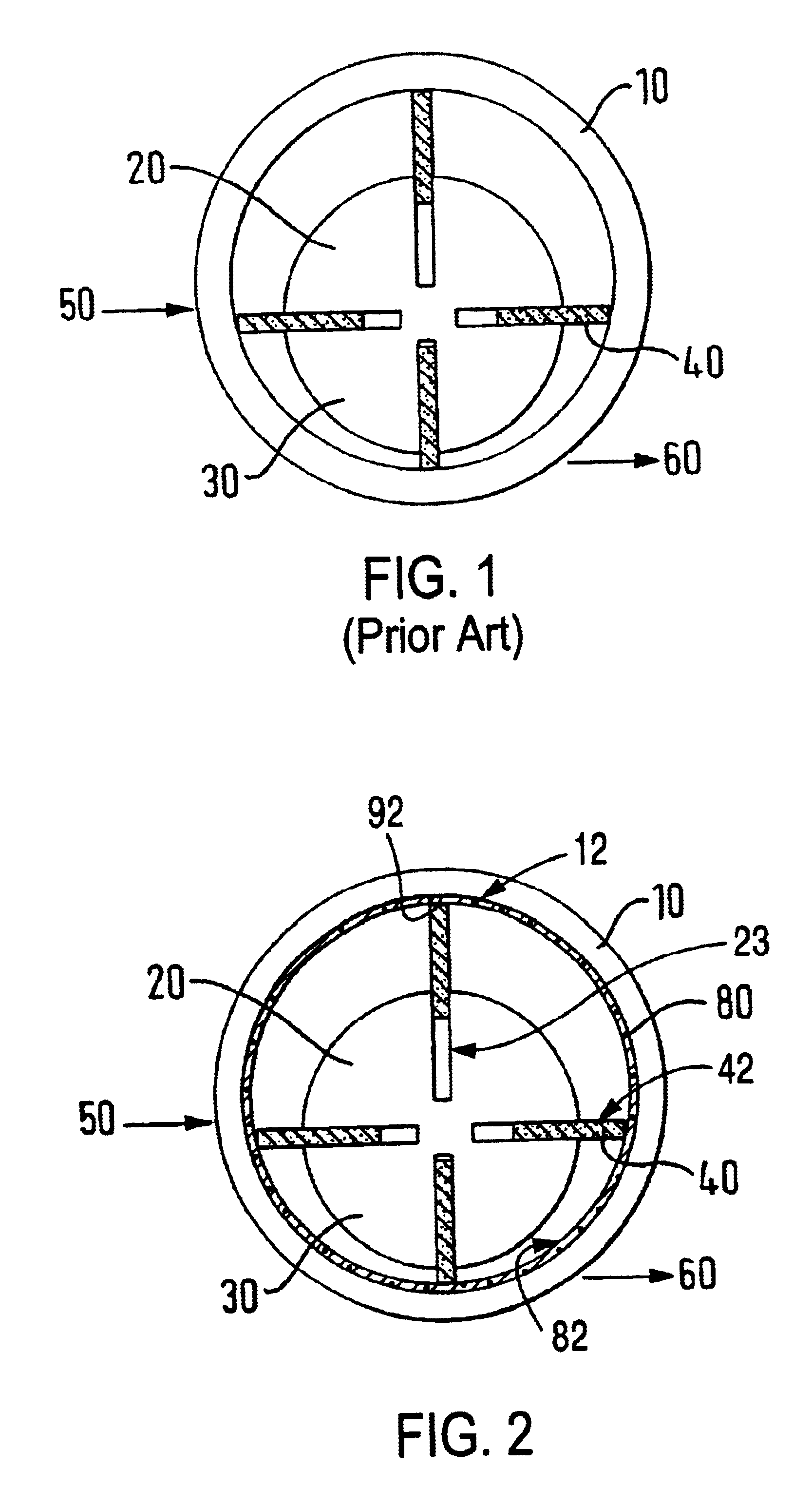Rotary pump
a rotary pump and rotor technology, applied in the direction of rotary piston engines, rotary or oscillating piston engines, liquid fuel engines, etc., can solve the problems of loss of efficiency, rotors being difficult to turn and wear of contact surfaces, and high friction between these surfaces
- Summary
- Abstract
- Description
- Claims
- Application Information
AI Technical Summary
Benefits of technology
Problems solved by technology
Method used
Image
Examples
Embodiment Construction
With reference to FIG. 2, a rotary pump illustrates the principle or the rotating stator inner liner is illustrated. This pump comprises a stator 10, a rotor 20 with rotor main body 30 and vanes 40, a fluid inlet 50 and outlet 60 and a stator inner liner 80 is shown. The pump differs from the pump shown in FIG. 1 in that it additionally comprises a stator inner liner 80. The stator inner liner 80 is mounted within the main stator body 10 and is free to rotate. The vanes 40 of the rotor 20 contact the stator inner liner 80 rather than the stator main body 10.
As the rotor turns the vanes 40 sweep along the surface of the stator inner liner 80. The vanes 40 exert a rotational torque on the stator inner liner 80, which is mounted such that it is free to rotate, and this causes it to rotate. The dimensions of the stator inner liner 80 are such that there is a gap between the stator main body 10 and the stator inner liner 80. A bearing can be provided between the stator main body 10 and t...
PUM
| Property | Measurement | Unit |
|---|---|---|
| Angle | aaaaa | aaaaa |
| Radius | aaaaa | aaaaa |
| Velocity | aaaaa | aaaaa |
Abstract
Description
Claims
Application Information
 Login to View More
Login to View More - R&D
- Intellectual Property
- Life Sciences
- Materials
- Tech Scout
- Unparalleled Data Quality
- Higher Quality Content
- 60% Fewer Hallucinations
Browse by: Latest US Patents, China's latest patents, Technical Efficacy Thesaurus, Application Domain, Technology Topic, Popular Technical Reports.
© 2025 PatSnap. All rights reserved.Legal|Privacy policy|Modern Slavery Act Transparency Statement|Sitemap|About US| Contact US: help@patsnap.com



